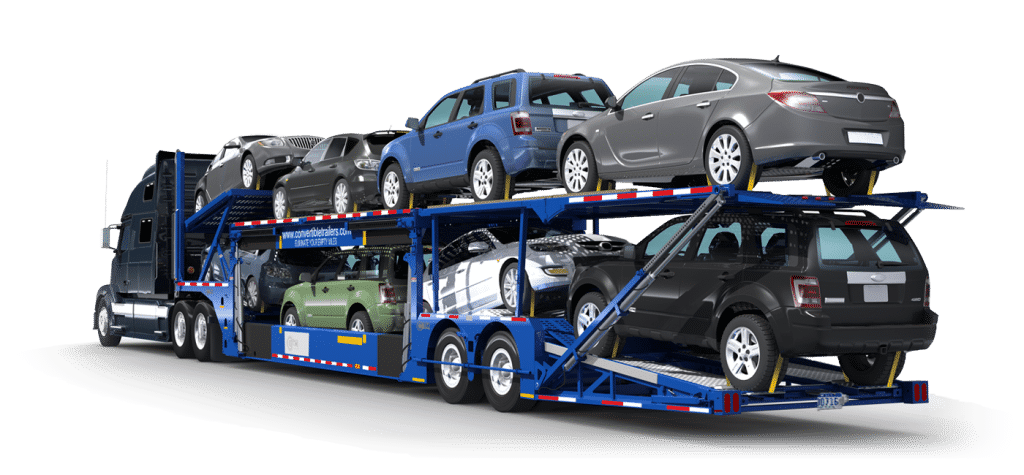Introduction To Seasonal Changes In Auto Shipping Costs
Seasonal changes have a significant impact on various aspects of our lives, and the auto shipping industry is no exception. The cost of transporting vehicles fluctuates throughout the year due to these seasonal variations, which are influenced by a multitude of factors. Understanding these fluctuations is crucial for both individuals and businesses involved in auto shipping, as it allows them to plan and manage their transportation needs effectively.
One key factor influencing seasonal changes in auto shipping costs is supply and demand. During certain times of the year, such as the summer months or holiday seasons, there is an increased demand for auto transportation services. This surge in demand often leads to higher prices as carriers have limited capacity to meet the needs of customers. Additionally, weather conditions play a vital role in determining shipping costs.
Harsh winter weather or storm seasons can cause delays and disruptions in transportation routes, resulting in higher prices due to increased risks and potential damage to vehicles during transit. Furthermore, economic factors like fuel prices can impact auto shipping costs.
Factors Influencing Auto Shipping Costs During Seasonal Changes
Auto shipping costs are influenced by various factors that fluctuate with the changing seasons. Understanding these factors is crucial for both auto transport companies and customers alike. Here, we explore the key elements that impact auto shipping costs during seasonal changes. 1. Demand and Supply: The demand for auto shipping services varies across different seasons. Factors like weather conditions, holidays, and personal preferences can affect the number of people seeking auto transportation services.
Consequently, during peak seasons when demand exceeds supply, prices tend to rise. 2. Weather Conditions: Extreme weather conditions can significantly impact auto shipping costs. Winter storms, heavy rainfall, or hurricanes can delay shipments or even cause damage to vehicles en route. As a result, carriers may increase their prices to account for potential risks associated with inclement weather. 3. Fuel Prices: Fluctuations in fuel prices directly affect transportation costs in the auto shipping industry.
Higher fuel prices during certain seasons may lead to increased rates as carriers need to cover their operating expenses. 4.
Increased Demand And Its Effect On Auto Shipping Costs
Seasonal changes play a crucial role in the transportation industry, particularly in the context of auto shipping costs. One significant factor influencing these costs is the increased demand observed during certain seasons. As the climate shifts, so does consumer behavior, leading to fluctuations in the demand for auto transportation services. During peak seasons like spring and summer, when weather conditions are favorable for travel and outdoor activities, there is a surge in demand for automobile shipments.
Many individuals choose this time to relocate or embark on extended vacations, resulting in a higher need for auto transport services. Consequently, this increased demand puts upward pressure on shipping costs. The impact of increased demand on auto shipping costs can be attributed to various factors. Firstly, limited availability of carriers due to high demand leads to increased competition among customers seeking transportation services for their vehicles.
This competition drives prices higher as carriers capitalize on the heightened market demand. Additionally, as more people require vehicle shipments during peak seasons, logistical challenges arise due to limited carrier capacity and availability.
Weather Conditions And Their Impact On Auto Shipping Costs
Weather conditions play a significant role in determining auto shipping costs, as seasonal changes can have a profound impact on the transportation industry. Adverse weather conditions can lead to delays, increased risks, and additional expenses, ultimately affecting the overall cost of shipping vehicles.
During the winter months, inclement weather such as snowstorms or icy roads can create hazardous driving conditions. These conditions often slow down transportation and pose safety risks for carriers, resulting in delayed deliveries. Moreover, extreme cold temperatures can affect engine performance and may require additional measures to ensure vehicle protection during transit.
Conversely, summer brings its own set of challenges. High temperatures can cause tires to wear out more quickly and increase fuel consumption for carriers. Additionally, intense heat may necessitate special precautions to prevent damage to vehicles from sun exposure or excessive heat during transport.
The impact of weather-related factors on auto shipping costs cannot be underestimated. Carriers must account for potential delays and additional resources required when pricing their services accordingly. Ultimately, understanding how seasonal changes influence weather conditions is crucial for both carriers and customers to manage expectations regarding auto shipping costs effectively.
Strategies For Reducing Auto Shipping Costs During Seasonal Changes
1. Plan Ahead: One effective strategy for reducing auto shipping costs during seasonal changes is to plan ahead and book your shipment well in advance. By doing so, you can secure lower rates as carriers often offer discounts for early bookings. 2. Flexible Dates: Consider being flexible with your shipping dates. During peak seasons, such as winter or summer, auto shipping costs tend to be higher due to increased demand.
By being open to alternative dates, you may find more affordable options. 3. Choose Terminal-to-Terminal Shipping: Opting for terminal-to-terminal shipping instead of door-to-door can help reduce costs significantly. Although it might require some extra effort on your part, dropping off and picking up your vehicle at designated terminals can save you money. 4. Consolidate Shipments: If possible, try to consolidate your shipment with others heading in the same direction.
Carriers often offer discounted rates for combined shipments, making it a cost-effective option during seasonal changes. 5.
Conclusion: Adapting To Seasonal Changes For More Cost-Effective Auto Shipping
In conclusion, understanding and adapting to the impact of seasonal changes on auto shipping costs is crucial for achieving cost-effectiveness in this industry. The fluctuations in demand, weather conditions, and logistical challenges associated with different seasons can significantly impact shipping prices. By being aware of these factors and implementing appropriate strategies, both auto shippers and customers can optimize their operations and budgets.
Firstly, recognizing peak seasons and planning accordingly can help reduce costs. During high-demand periods like summer or holidays, prices tend to rise due to increased competition among customers. Shippers can take advantage of off-peak seasons by offering discounts or consolidating shipments to maximize efficiency. Secondly, adapting shipping methods to suit weather conditions is essential. Harsh winter climates may require additional safety measures, such as using enclosed carriers or ensuring proper vehicle preparation.
This proactive approach minimizes the risk of damage caused by extreme weather conditions during transit. Lastly, establishing strong partnerships with reliable carriers is crucial for cost-effective auto shipping throughout the year.








